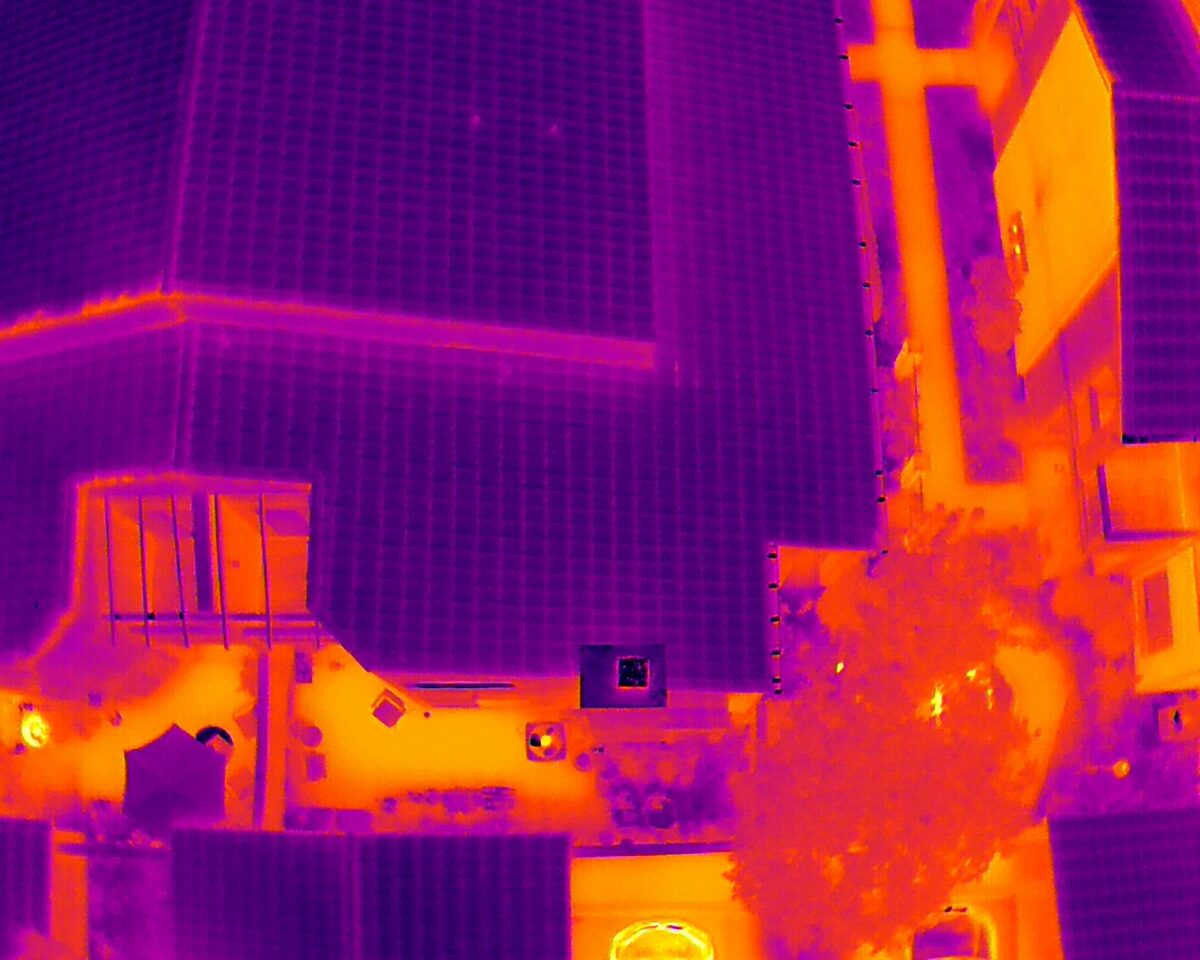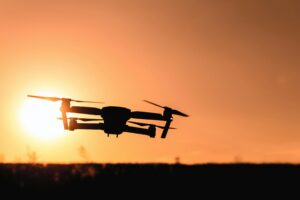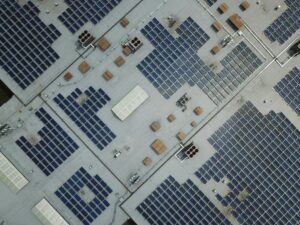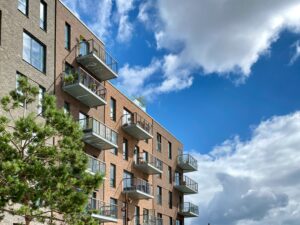As drones have become more popular, they have made their way into all kinds of industrial scenarios, from agriculture to surveying. But one industry that is experiencing significant benefits from drone technology is roofing.
In this post, we’ll spend some time discussing the ways modern drone technology is transforming the roofing industry.
Marketing
Arguably the most common use for drone technology in the roofing industry is marketing. Simply put, drones are one of the best marketing tools for roofing companies.
If you look at any given roofing company’s website, you’ll almost always see photos or video footage taken from a drone showcasing their latest work or notable projects. In this day and age, drone footage is simply the new standard when it comes to marketing. Drones allow roofing companies to properly highlight their work with content that would be impossible to capture with a conventional camera.
This is especially true when it comes to larger projects like apartment complexes, condos, or hotels. To properly highlight the successful handiwork of a company’s crew, a flying camera is simply the only option.
And before we move on, it’s important to point out the importance of a robust marketing strategy for a roofing company. If you do a quick Google search for your local area, you’re bound to see a ton of roofing companies promising to deliver the best end product. With so many players in the market, it’s critical to stand out and show potential clients a sample of a company’s best work in a quick way that is guaranteed to leave a lasting impression. Drone photos and video footage are simply the best way to do that.
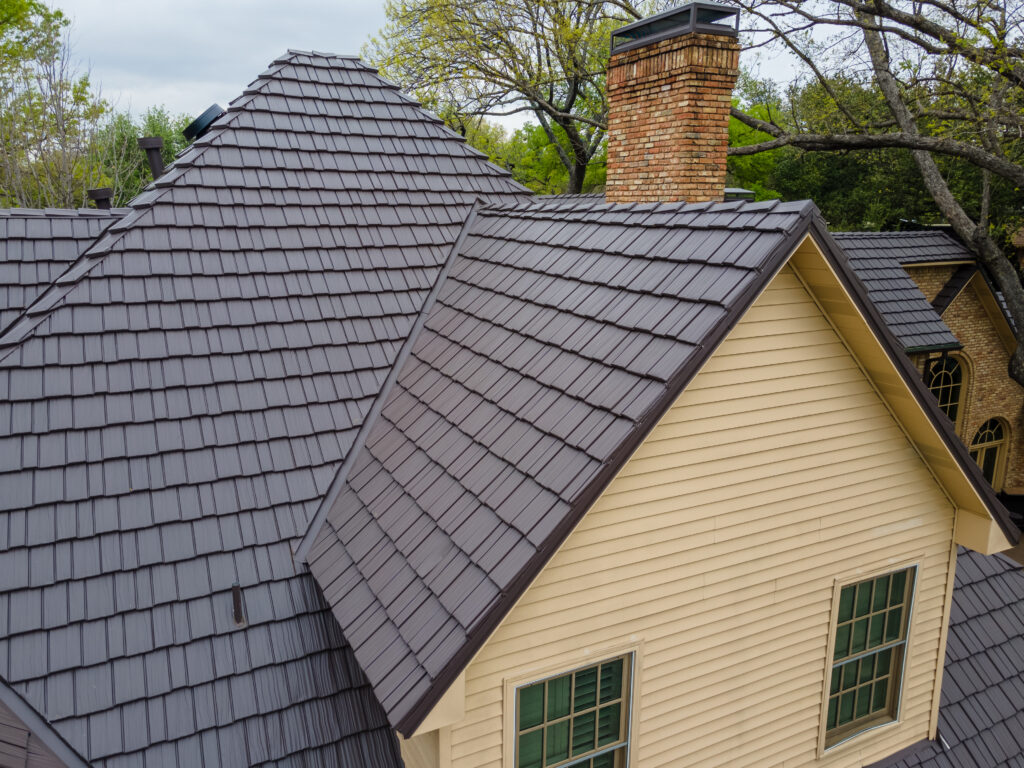
Inspections
Now we’ll discuss the more industrial drone application when it comes to roofing — drone roof inspections. In particular, we’ll discuss the role of drone technology in visual and infrared/thermal roof inspections.
Visual Drone Roof Inspections
Inspections are a prominent part of a roofing company’s service portfolio. A thorough inspection can reveal issues (or lack thereof) that inform a client’s decision to replace their roof.
Historically, roof inspections have been conducted by an inspector physically walking around the roof to inspect it. But modern drone technology allows roofing companies to deploy a drone and capture high-resolution photos and video footage of a roof.
First and foremost, this method of inspection is safer, as it means an inspector can gather meaningful data on a roof’s condition from the safety of the ground. The safety benefit is even more significant when it comes to larger, more complex roofs. A drone can quickly and easily capture photos and footage of a high, hard-to-reach portion of a roof that would be difficult and unsafe to reach during a conventional inspection.
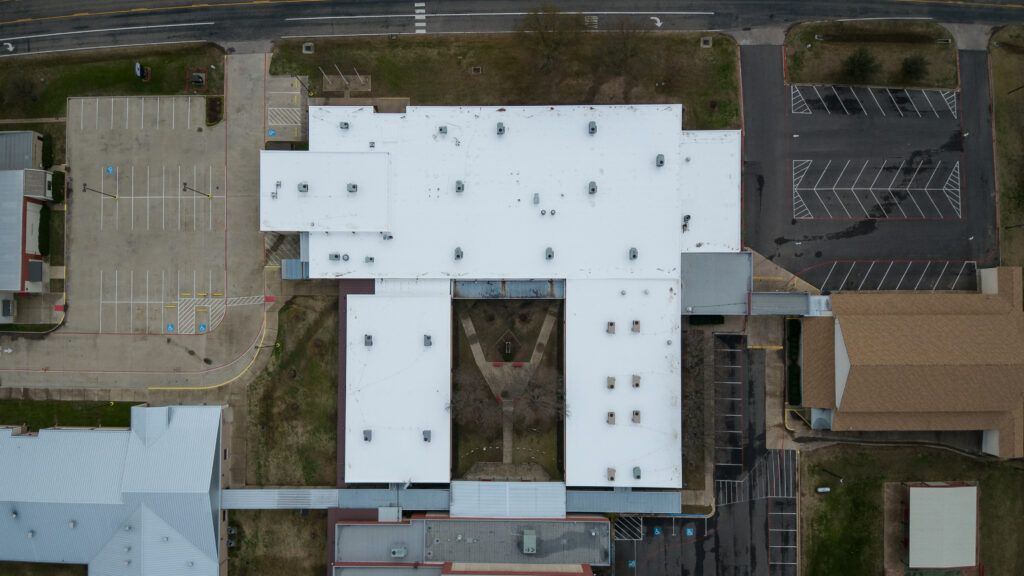
Thermal Drone Roof Inspections
Going even more industrial, modern infrared drone technology has provided a highly accurate and efficient way of identifying moisture issues with a roof. Simply put, drones with infrared/thermal sensors can identify thermal anomalies in a roof structure that indicate issues like water intrusion.
Water intrusion can be a big problem on any roof, but this is especially the case with larger commercial flat roofs. And the reality is that infrared-capable drones provide meaningful data on issues that are largely impossible to detect with the naked eye.
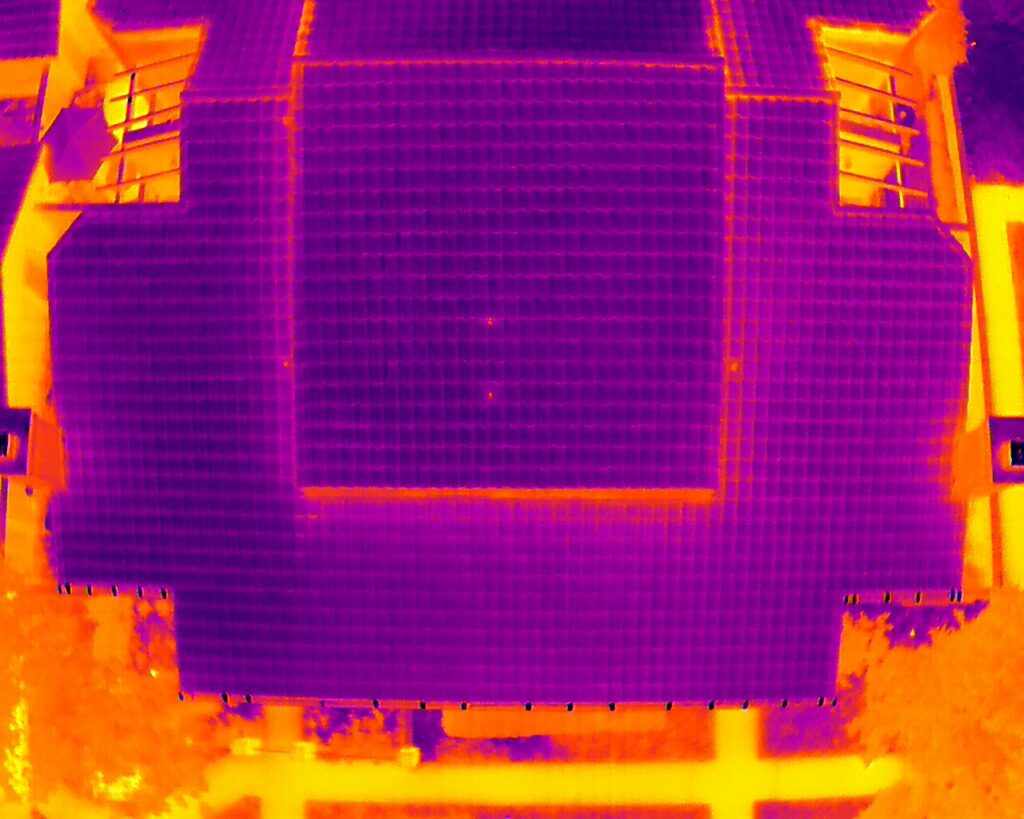
Conventional Inspections + Drone Inspections
Now, it’s important to point out that the conventional method of inspection still has its place. Depending on the scenario, there might be a need to supplement the preliminary data captured by a drone with a physical inspection to verify the extent and nature of the initial findings. Thus, the best approach is to strategically utilize drones to conduct operations more safely and efficiently and to capture preliminary data that can inform the decision-making process.
Importance of the Part 107 Certification
But before we wrap up, we would be remiss not to mention the importance of the FAA Part 107 Remote Pilot Certification. Whether it’s marketing or inspections, using drones in a roofing capacity constitutes the furthering of a business, therefore this certification is required. For more information on the benefits of continuing to outsource drone needs to a credible service provider, take a look at this post.

